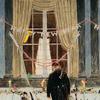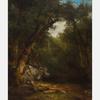Radical Women: Latin American Art, 1960‐1985
- LOS ANGELES, California
- /
- November 11, 2016
Next September (2017), the Hammer Museum presents Radical Women: Latin American Art, 1960‐1985, a groundbreaking exhibition that will constitute the first history of experimental art practices in Latin America by women artists and their influence internationally. Addressing an art historical vacuum, Radical Women will give visibility to the artistic practices of women artists working in Latin America and US‐born Chicanas and Latinas between 1960 and 1985—a key period in Latin American history and in the development of contemporary art. Fifteen countries will be represented in the exhibition by 116 artists, with more than 260 works in photography, video, and other experimental mediums. Among the women included are emblematic figures such as Lygia Pape, Ana Mendieta, and Marta Minujín alongside lesser‐known names such as the Cuban‐born abstract artist Zilia Sánchez, the Colombian sculptor Feliza Burztyn, the New York‐born Puerto Rican photographer Sophie Rivera, and the Argentine mixed‐media artist Margarita Paksa. The exhibition is guest curated by Dr. Cecilia Fajardo‐Hill and Dr. Andrea Giunta as part of Pacific Standard Time: LA/LA.
“Radical Women brings overdue scholarly attention to the extraordinary contributions that these Latin American women artists have made to the field of contemporary art,” said Hammer Museum director Ann Philbin.“Reflecting the various political and social turmoil of their times, including the many dictatorships that ruled Latin American countries in the 1960s, 1970s, and early 1980s, the artworks in Radical Women can be viewed as heroic acts that gave a voice to generations of women across Latin America and the United States.”
“Los Angeles is a city whose very fabric is constituted by Latin American, Latina, and Chicana women, and I think Radical Women and PST: LA/LA willreveal a part of ourselves,” said exhibition co‐curator Dr. Cecilia Fajardo‐Hill. “For the artists included in this exhibition, the female body became a locus of exploration and rediscovery in a radical new visual language that challenged the way of understanding the world.”
Radical Women centers on the notion of the political body. These artists embarked on radical and experimental artistic investigations beginning in the early 1960s, forging new paths in photography, performance, video, and conceptual art. They generated a line of inquiry focused on the politicization of the female body and sought to break free from the atmosphere of political and social repression that overshadowed women in Latin America between 1960 and 1985. In their work, the representation of the female body became a starting point for questioning the established art canon as well as a means of denouncing social, cultural, and political acts of violence. This new iconography based on the body explored both the personal and political realms of representation for Latin American and Latina artists who also employed the body as both an actual and symbolic medium.
“Poetic and political, topics explored in the exhibition include self‐portraiture, body landscape, and feminisms,” explained exhibition co‐curator Dr. Andrea Giunta. “These themes draw together the artworks across national and geographic boundaries, making the case for parallel practices by artists often working in very different cultural conditions.”
This exhibition will consider an approach to feminism that is relevant to the artists' geographic context and their specific political and social backgrounds. In Latin America there is a strong history of feminist militancy that—with the exception of Mexico and some isolated cases in the 1970s and 1980s—is not widely reflected in the arts. In the case of Latina and Chicana artists working in the United States, they were responding to patriarchal politics as oppressive asthose faced by their counterpartsin Latin America as well as to a second‐wave feminism that was often indifferent to the issues faced by women of color. Radical Women proposes that the works of these artists are both aesthetically and politically radical, putting forth feminist agendas while engaging in social and political critique as well as the exploration of female sensibility with both covert and overt links to political feminism.
Radical Women includes work of renowned Latin American women artists such as Beatriz González, Anna Maria Maiolino, Ana Mendieta, Lygia Pape, and Cecilia Vicuña. Since the 1990s some of these artists have been widely recognized for their originality and the experimental nature of their work and are considered to be among the most influential artists of the twentieth century. However,several other Latin American women artists remain in virtual anonymity outside of their own countries. For instance, starting in the 1960s, the Puerto Rican–based Zilia Sánchez imbued the formal language of geometric abstraction with a sense of eroticism. Equally important is the pioneering work of video artists such as the Brazilian Leticia Parente, the Argentine Narcisa Hirsch, and the Mexican Pola Weiss, whose works employ the female body as a vehicle for enunciating both the restrictions imposed on women and the freedom of expression coveted by citizens across Latin America in the mid‐1970s. At best, these artists are known on a strictly local level—a blatant omission from the annals of post‐1945 global art that Radical Women aims to correct. Radical Women presents the argument that many of these under‐recognized artists have helped shape a more complex, expanded, and diverse field of conceptual, video, performance, and installation art in Latin America and the United States. The research archives already amassed in preparation for this exhibition will enormously benefit the field of Latin American art history going forward, opening up new areas of critical inquiry. Radical Women will also include a national and international tour and a scholarly publication.
Radical Women will be accompanied by a fully‐illustrated, 350‐page catalogue published by the Hammer in association with Prestel. The catalogue includes essays by Fajardo‐Hill and Giunta as well as contributions from more than 10 scholars with specialized knowledge of a variety of topics from the history of feminist art in Latin America to the artistic practice of Chicanas and Latinas working across the US. Authors include Rodrigo Alonso, Julia Antivilo, Connie Butler, Rosina Cazali, Cecilia Fajardo‐Hill, Marcela Guerrero, Andrea Giunta, Carmen María Jaramillo, Miguel López, Mónica Mayer, Maria 3 Angelica Melendi, Karen Cordero Reiman, María Laura Rosa, and Carla Stellweg. Designed by Jessica Fleischmann, the catalogue will be available September 2017.








![Peter Paul Rubens (Flemish, 1577–1640), After Titian (Tiziano Vecelli) (Italian [Venetian], c. 1488–1576), Rape of Europa, 1628–29. Oil on canvas, 71 7/8 x 79 3/8 in. Peter Paul Rubens (Flemish, 1577–1640), After Titian (Tiziano Vecelli) (Italian [Venetian], c. 1488–1576), Rape of Europa, 1628–29. Oil on canvas, 71 7/8 x 79 3/8 in.](/images/c/e2/2e/Jan20_Rape_of_Europa100x100_c.jpg)
__Portrait_of_a_Young_100x100_c.jpg)






